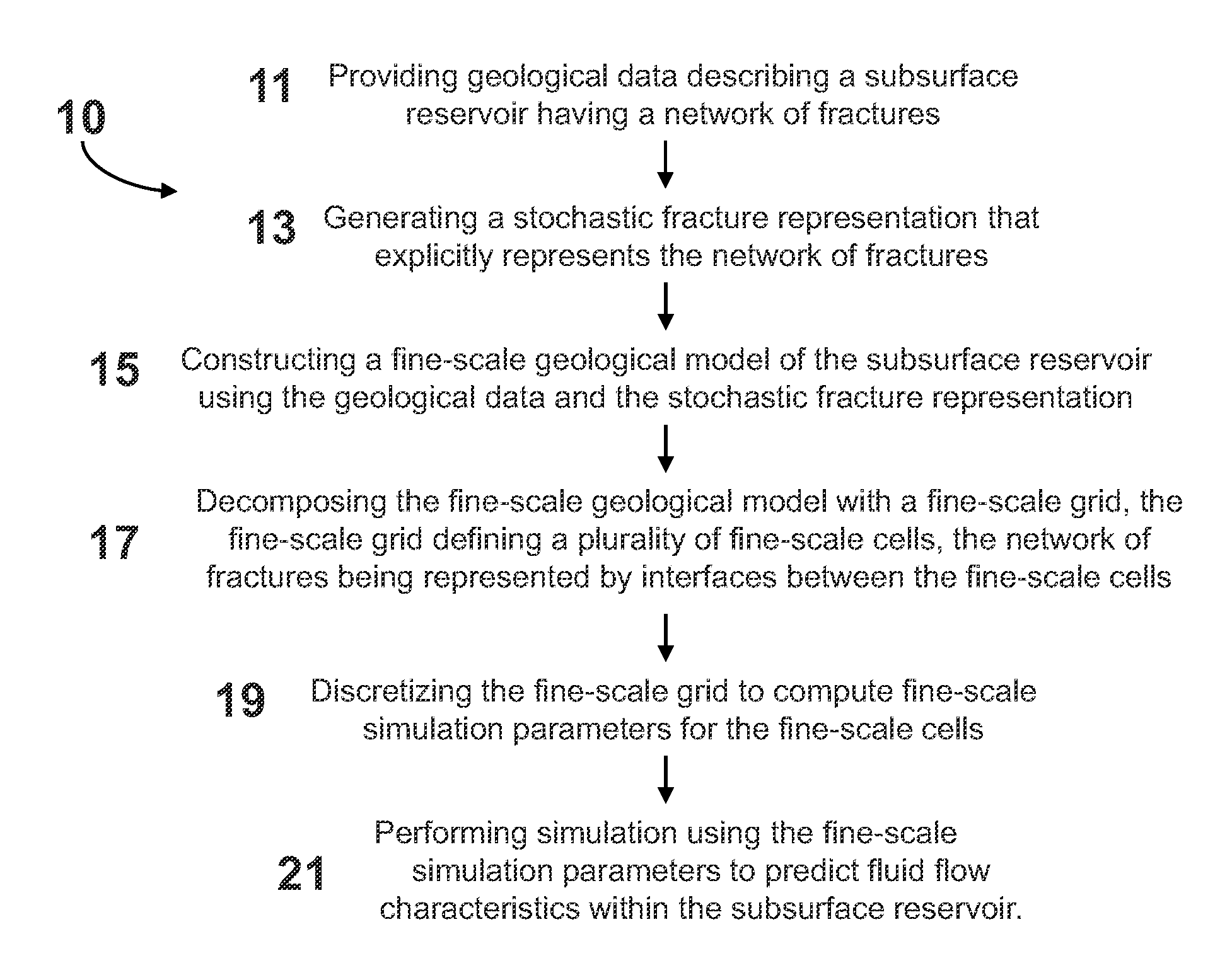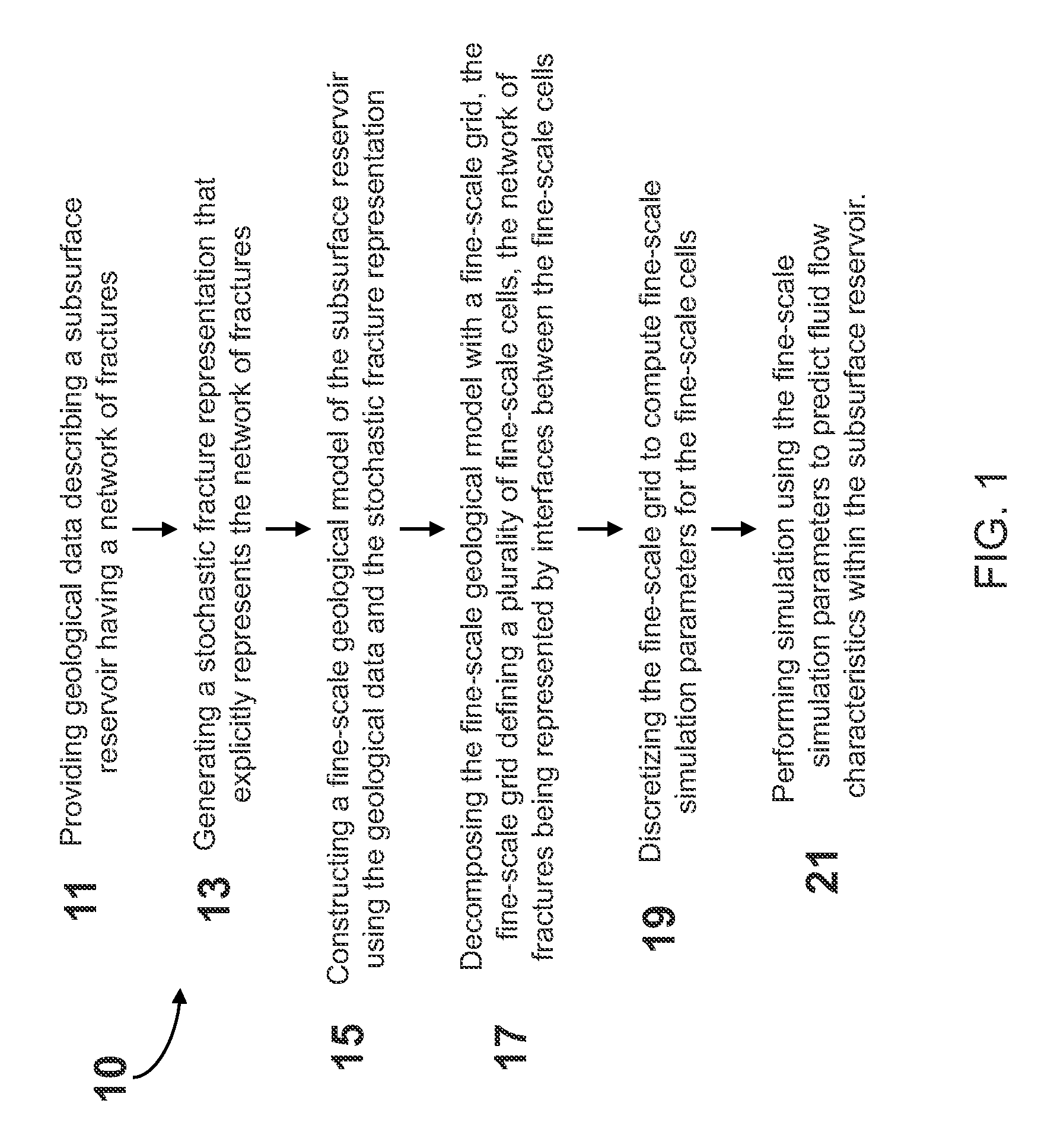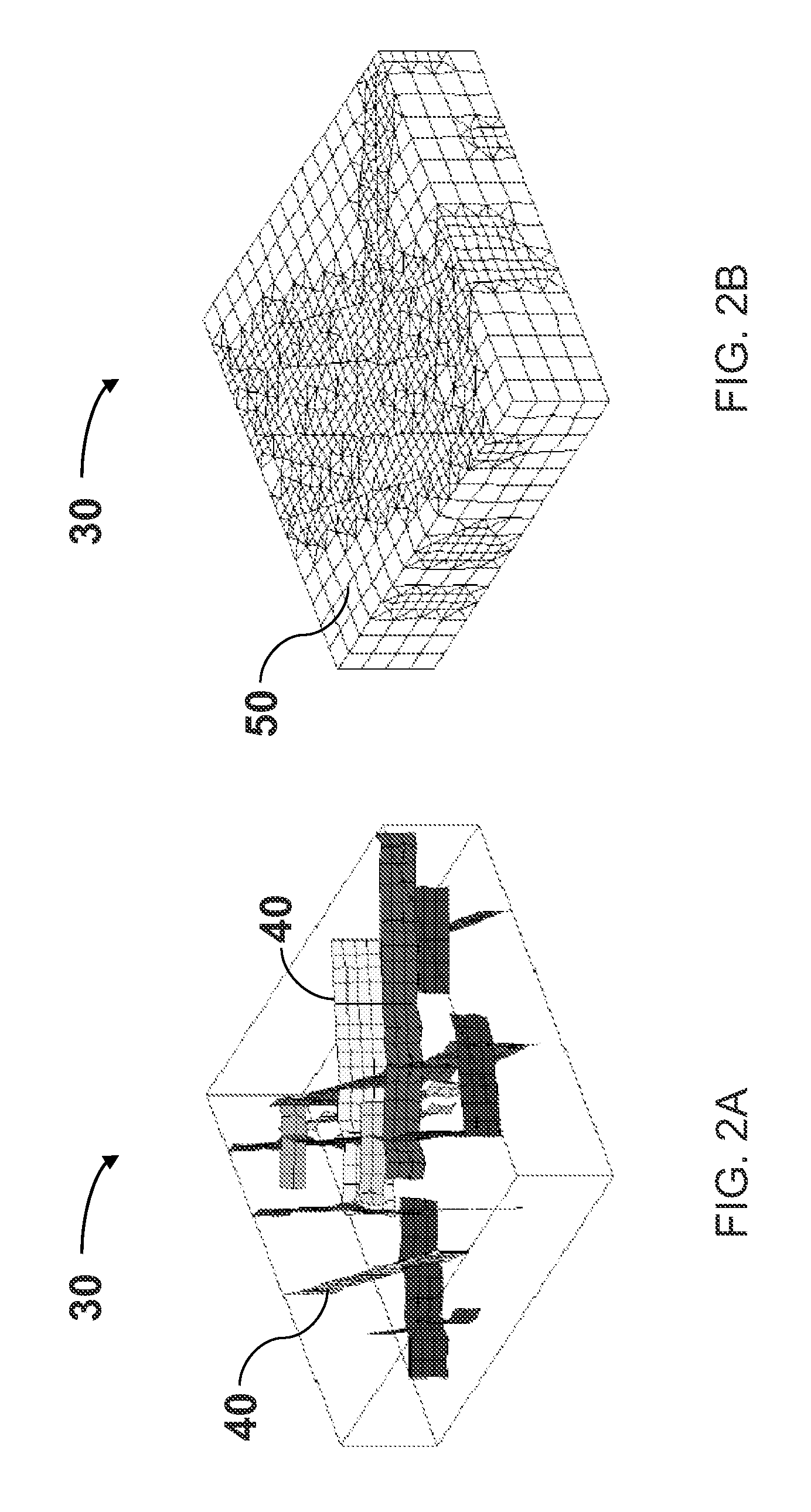System and method for predicting fluid flow characteristics within fractured subsurface reservoirs
a reservoir and fluid flow technology, applied in the direction of cad techniques, instruments, borehole/well accessories, etc., can solve the problems of affecting the simulation effect of full-field simulation models, difficult hydrocarbon passage through formation, and inability to accurately predict the fluid flow characteristics of fractured subsurface reservoirs
- Summary
- Abstract
- Description
- Claims
- Application Information
AI Technical Summary
Benefits of technology
Problems solved by technology
Method used
Image
Examples
examples
[0060]Referring to FIG. 4, the system and method as described in FIG. 1 is applied to a giant carbonate reservoir to predict fluid flow characteristics. In particular, a sector encompassing a region of interest, which is approximately 17 mi×1.4 mi×1.1 mi in physical dimension and represents about 1 / 15th of the full-field model, is investigated. As in Step 11 of Method 10, geological data describing the sector is provided. Using the fracture characterization procedure, a network of hundreds of discrete fractures is stochastically generated, similar to that which is performed in Step 13 of Method 10. A realistic discrete fracture model 200 is constructed to represent the carbonate reservoir. The realistic discrete fracture model 200 is an example of a fine-scale geological model of the subsurface reservoir that is constructed in Step 15 of Method 10. The model contains 1230 discrete fractures, represented by reference character 210, and 47 current or future planned wells (8 fluid inje...
PUM
 Login to View More
Login to View More Abstract
Description
Claims
Application Information
 Login to View More
Login to View More - R&D
- Intellectual Property
- Life Sciences
- Materials
- Tech Scout
- Unparalleled Data Quality
- Higher Quality Content
- 60% Fewer Hallucinations
Browse by: Latest US Patents, China's latest patents, Technical Efficacy Thesaurus, Application Domain, Technology Topic, Popular Technical Reports.
© 2025 PatSnap. All rights reserved.Legal|Privacy policy|Modern Slavery Act Transparency Statement|Sitemap|About US| Contact US: help@patsnap.com



